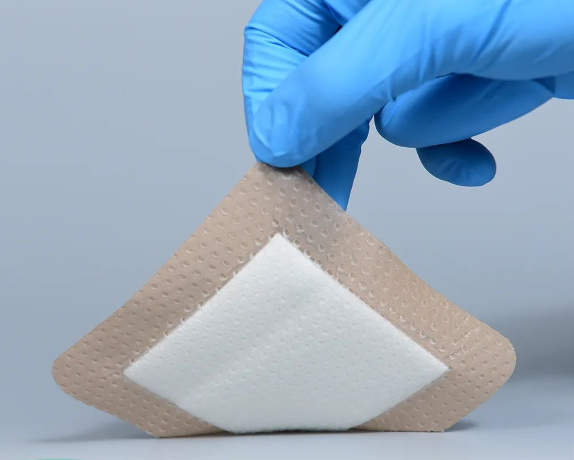Decubitus ulcers, also known as pressure ulcers, are a condition in which the skin and subcutaneous tissue are damaged due to long-term bed rest or wheelchair use. Bedsores not only cause pain and discomfort to patients but also increase the risk of infection, which can even be life-threatening in severe cases. Therefore, preventing and treating bedsores is crucial for people who are bedridden for long periods of time.
Silicone gel foam dressing is a new type of dressing used to prevent and treat decubitus ulcers. Its main component is silicone gel, which has good breathability, water absorption, and antibacterial properties. Silicone gel foam dressings can effectively disperse pressure and reduce friction between the skin and the bed or wheelchair, thereby reducing the risk of bedsores. At the same time, the silicone gel foam dressing can also absorb wound exudate and keep the area around the wound dry, which is beneficial to wound healing.
So, how do you use silicone gel foam dressings to prevent and treat bedsores?
1. Choose the appropriate silicone gel foam dressing: Choose the appropriate silicone gel foam dressing according to the patient's condition and needs. Different styles of silicone gel foam dressings can be used according to different pressure areas.
2. Proper use: Before using silicone gel foam dressing, the patient's skin should be cleaned to remove oil and dirt. Then apply the silicone gel foam dressing flatly to the affected area, making sure that the dressing is in close contact with the skin.
3. Change regularly: Silicone gel foam dressings should be changed regularly to maintain their effectiveness. The frequency of replacement should be determined based on the patient's condition and the usage of the dressing. It is generally recommended to change it every 2-3 days. When changing dressings, the wound condition should be observed and if there are signs of infection, seek medical attention promptly.
4. Precautions: When using silicone gel foam dressing, attention should be paid to keeping the area around the wound dry and clean and avoiding getting wet. If an allergic reaction occurs, stop use immediately and seek medical advice.
Care recommendations:
1. Keep the skin dry and clean, clean the skin with a mild cleanser and pat dry.
2. Patients with incontinence should clean up in time after defecation and urination to reduce irritation.
3. Change bedding and clothes frequently and choose clothes and sheets made of soft fabrics to reduce friction with the skin.
4. Change positions regularly. Patients in wheelchairs should change positions every 15 minutes, and patients in bed should change positions every 2 hours.
5. When helping patients with bedsores to turn over, lift their bodies and then move them to avoid dragging and pushing to avoid skin abrasions.
In summary, silicone gel foam dressings are a safe and effective way to prevent and treat bedsores. Through the correct use of silicone gel foam dressings, the risk of bedsores can be effectively reduced, the patient's pain is relieved, and the quality of life is improved.
For more information on customized® Silicone Foam Dressing Sacrum, refer to the previous articles. If you have needs, you are welcome to contact us; we will serve you wholeheartedly.
At Longterm Medical, we transform this data by innovating and developing products that make life easier for those who need loving care.
Editor: kiki Jia
Date: October 28, 2022

 English
English عربى
عربى Español
Español русский
русский 中文简体
中文简体








